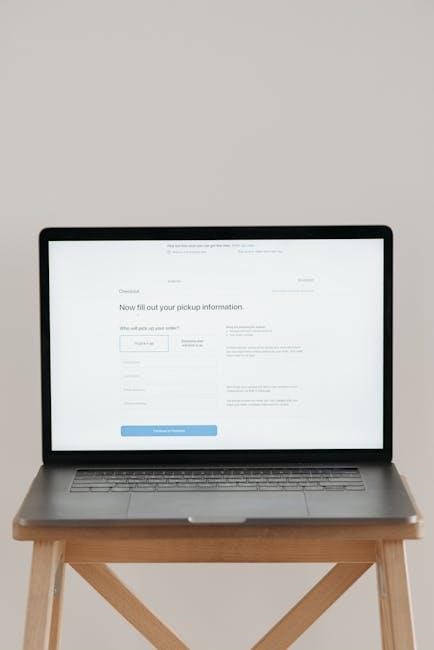
business to business credit application form
A business-to-business credit application form is a standardized document. Companies use it to evaluate and establish credit terms with other businesses. This fail-safe determines a customer’s credit worthiness. It is essential to vet applicants thoroughly using this form.
What is a B2B Credit Application Form?
A B2B credit application form is a crucial document. Businesses use this to request funding or credit lines from banks. It’s a formal request submitted to a creditor for a credit line. This application helps determine a customer’s creditworthiness effectively. Think of it as a standardized document. Companies use it to evaluate and establish credit terms with other businesses. It streamlines the credit application process. It allows for informed decisions about creditworthiness. It establishes credit accounts between businesses and their suppliers or vendors. This application facilitates efficient purchasing processes. It improves cash flow management and builds business credit;
B2B credit applications are important to use for determining your customers’ creditworthiness. Include key details in your application form. Follow the proper steps in creating a credit policy; Implement best practices regarding extending credit. It is a vital tool for managing financial risk.
Purpose of a B2B Credit Application
The purpose of a B2B credit application is multifaceted. It serves primarily as a tool for assessing creditworthiness. Businesses use it to determine whether to extend credit to another business. It provides a structured way to gather essential information. This includes financial history, trade references, and business details. By collecting this data, companies can evaluate risk. They can make informed decisions about credit terms and limits. The application also establishes a legal framework for the credit relationship. It outlines the rights and responsibilities of both parties. It is used when you want to establish credit accounts between businesses and their suppliers.
The application streamlines the onboarding process for new clients. It expedites customer onboarding by providing a standardized form. It improves cash flow management by enabling credit-based transactions. This builds business credit history, and provides financial institutions essential information. It manages risk effectively.
Key Components of a B2B Credit Application Form
A B2B credit application form comprises several key components. These components provide a comprehensive overview of the applicant’s business and financial standing. Typically, the form includes sections for business information. This covers legal name, address, and contact details. Financial data is another crucial element. This involves bank details, financial statements, and credit references. The form also outlines the desired credit terms, specifying the credit limit requested and repayment schedule; Legal agreements are incorporated to establish the terms and conditions of the credit arrangement. Authorized signatures are required to validate the application.
These reflect collective experience and frequently include input from credit management organizations. Applicant’s contact information and ownership information are important. Trade reference information and company credit score are valuable to know. Key contacts, legal agreements, and financial statements are essential. These forms are designed for the target audience of financial institutions.
Business Information
The business information section is a fundamental component of any B2B credit application form. It seeks to gather essential details about the applicant’s company. This includes the full legal name of the business, ensuring accuracy in identification. The complete business address, including headquarters and any additional locations, is also required. Contact information, such as phone numbers, email addresses, and website URLs, facilitates communication. The form often requests information about the business structure, whether it’s a sole proprietorship, partnership, or limited liability company.
Furthermore, the length of time the business has been operating is crucial for assessing stability. The nature of the business, describing its primary activities, provides context for creditworthiness. A federal tax ID number helps verify the business’s legitimacy. The inclusion of a DUNS number, if available, allows for access to additional credit information. This section ensures that the creditor has a clear understanding of the applicant’s corporate identity and operational background. It is essential for preliminary risk assessment.
Financial Data

This section of a B2B credit application delves into the applicant’s financial health. Bank details, including the bank name, account number, and routing number, are essential for verifying financial stability. The applicant might need to provide financial statements, such as balance sheets and income statements, to give a clearer picture of their assets, liabilities, and profitability. Credit references from other suppliers or vendors are crucial. These references allow the creditor to assess the applicant’s payment history and creditworthiness with other businesses.
Information about the company’s credit score, if available, is also valuable. The applicant will often specify the credit limit requested, indicating the amount of credit they need. Providing comprehensive financial data ensures that the creditor can accurately evaluate the applicant’s ability to manage debt and fulfill their financial obligations. The financial data section allows a creditor to make informed decisions. Assessing the risk associated with extending credit.
Credit Terms
This critical section outlines the specific agreements regarding payment schedules, interest rates, and late payment penalties. Credit terms define when payments are due, for example, net 30, net 60, or other agreed-upon timelines. Interest rates, if applicable, should be clearly stated. Detailing how interest will be calculated on outstanding balances.
Any discounts offered for early payments also fall under credit terms. This encourages prompt payment habits. It is crucial to specify late payment penalties, including fees or interest charges. Laying out the consequences of failing to meet payment deadlines. The credit application should also cover dispute resolution processes. Explaining how disagreements over charges or payments will be handled. Setting clear credit terms helps prevent misunderstandings. Ensures both parties are aligned on payment expectations. Carefully defining these terms protects both the creditor and the applicant. Fostering a healthy business relationship.
Legal Agreements
This section includes legally binding clauses that protect the creditor’s interests. A critical component is the personal guarantee, where business owners agree to be personally liable for the debt if the company defaults. This provides additional security for the creditor. Another essential clause is the forum selection clause, specifying the jurisdiction where any legal disputes will be resolved. This helps avoid complications related to varying state laws.
Confession of judgment clauses allow the creditor to obtain a judgment against the debtor without a trial in some states. These clauses are subject to legal limitations. Security agreements outline any assets pledged as collateral to secure the credit line. Lien rights are detailed, allowing the creditor to place a claim on the debtor’s property if payment is not made. A statement of accuracy verifies that all information provided in the application is true and correct, with penalties for misrepresentation. These legal agreements provide a framework for a secure and legally compliant credit relationship.

Authorized Signatures
This section requires signatures from individuals authorized to bind the applicant company to the credit agreement. Typically, this includes the owner, CEO, CFO, or other high-ranking executives. The signature signifies that the applicant has read, understood, and agreed to the terms and conditions outlined in the credit application.
Below the signature line, there should be printed names and titles to clearly identify the signatories. The date of signature is crucial, as it establishes the effective date of the agreement. Corporate seals or stamps may also be required to validate the authenticity of the signatures. Witness signatures can provide additional verification, depending on the creditor’s policies. A statement confirming the signatory’s authority to represent the company should be included. Accurate and complete signatures ensure the legal enforceability of the credit agreement and protect both parties involved.
Why Use a B2B Credit Application?
A B2B credit application is crucial for assessing a customer’s creditworthiness before extending credit terms. It helps businesses make informed decisions about extending credit. This application aids in minimizing the risk of non-payment and bad debt. It also streamlines the customer onboarding process by gathering essential information upfront. Using credit applications helps in establishing clear payment terms and expectations with customers.

Moreover, it provides a legal record of the agreement between the supplier and the customer. This protects both parties in case of disputes or non-compliance. A B2B credit application facilitates better cash flow management by ensuring timely payments. It also allows businesses to build stronger relationships with their customers based on trust and transparency. Finally, it supports the establishment of consistent credit policies across the organization and ensures fair treatment of all customers.

Streamlining the Credit Application Process
Streamlining the B2B credit application process involves simplifying and expediting each step, from initial request to final decision. Employing a user-friendly online application form accessible through a website or portal is a crucial initial step. Automated data entry and validation can reduce manual errors and accelerate processing times. Integrating with credit bureaus for instant credit checks further streamlines the process.
Implementing a clear and concise credit policy ensures consistency and transparency. Utilizing credit application templates helps standardize data collection and analysis. Automated scoring systems can swiftly evaluate applications based on pre-defined criteria. Consistent communication with applicants keeps them informed and engaged. Regular reviews and updates to the application form and process optimize efficiency. Ultimately, streamlining enhances customer experience and reduces administrative burden. Effective use of technology and clear procedures ensures efficient and accurate credit assessments.
Common Challenges in the B2B Credit Application Process
One significant challenge lies in obtaining complete and accurate information from applicants. Businesses may hesitate to disclose sensitive financial data. Verifying the authenticity of submitted documents and references can also be time-consuming. Assessing creditworthiness, especially for new or small businesses with limited credit history, poses another hurdle. Differing credit terms and expectations between businesses can lead to disagreements.
Managing a high volume of applications efficiently requires robust systems and processes. Internal communication breakdowns can delay the approval process. Keeping up with evolving regulations and compliance requirements adds complexity. Dealing with disputes or delinquent accounts demands effective collection strategies. Balancing risk mitigation with the need to foster customer relationships can be delicate. These challenges highlight the importance of having a well-defined credit policy, streamlined processes, and skilled personnel to navigate the complexities of B2B credit applications.
Using B2B Credit Application Templates
B2B credit application templates offer a structured framework for gathering essential information from businesses seeking credit. These templates ensure consistency and completeness in the data collected, streamlining the evaluation process. They often include pre-defined fields for business information, financial data, credit references, and legal agreements. Templates can be customized to suit specific industry requirements and internal policies.
Utilizing a template helps ensure that all necessary information is obtained upfront, reducing the need for follow-up inquiries. This accelerates the application process and improves efficiency. Templates also facilitate standardized risk assessment and credit scoring. Ready-made templates expedite the customer onboarding. They can be easily adapted for online use, enhancing accessibility and convenience. By leveraging templates, businesses can improve consistency, efficiency, and compliance in their credit application process, leading to better informed credit decisions and reduced risk.
Automated Credit Application Systems
Automated credit application systems streamline the B2B credit approval process, improving efficiency and accuracy. These systems digitize the entire application lifecycle, from initial submission to final decision. Online portals allow businesses to easily complete and submit applications electronically, reducing paperwork and manual data entry. Automated systems can integrate with credit bureaus and financial databases to instantly verify information and assess creditworthiness.
Automated scoring models analyze applicant data against predefined criteria, providing objective risk assessments. These systems can also generate automated credit reports and recommendations, expediting the decision-making process. Real-time monitoring and alerts notify stakeholders of potential issues or delays. Integration with accounting software simplifies invoicing and payment tracking. Automated systems also ensure compliance with regulatory requirements and internal policies. By automating the credit application process, businesses can reduce costs, improve efficiency, and make more informed credit decisions.